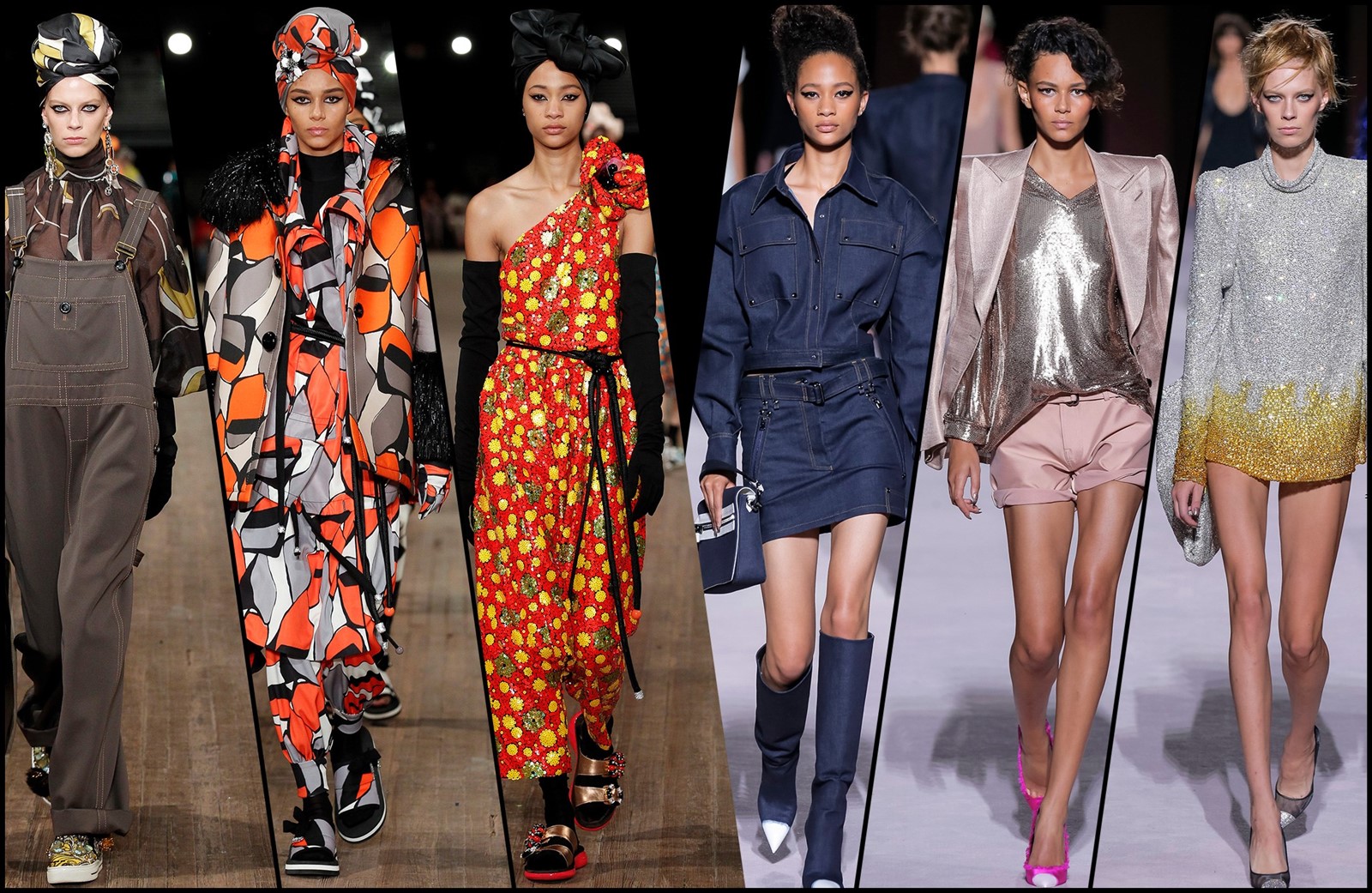Tom Ford and Marc Jacobs were the twin poles of Spring/Summer 2018 New York Fashion Week – their shows, both held at the Park Avenue Armory, served as bookends, a florid intro and a definitive full-stop. They both represented the very essence of New York fashion, which also means American fashion, at least as perceived on the world stage.
What does that mean? A sportiness, an easiness, and an interesting echo of the aristocracy of wealth. If Raf Simons’ Calvin Klein is so successful because of his outsider’s eye view of American culture and tradition, his dissection of the country’s tropes and mores, Jacobs and Ford are embedded deep inside it. A Texan and a native New Yorker, their views are opposing, but quintessentially American.
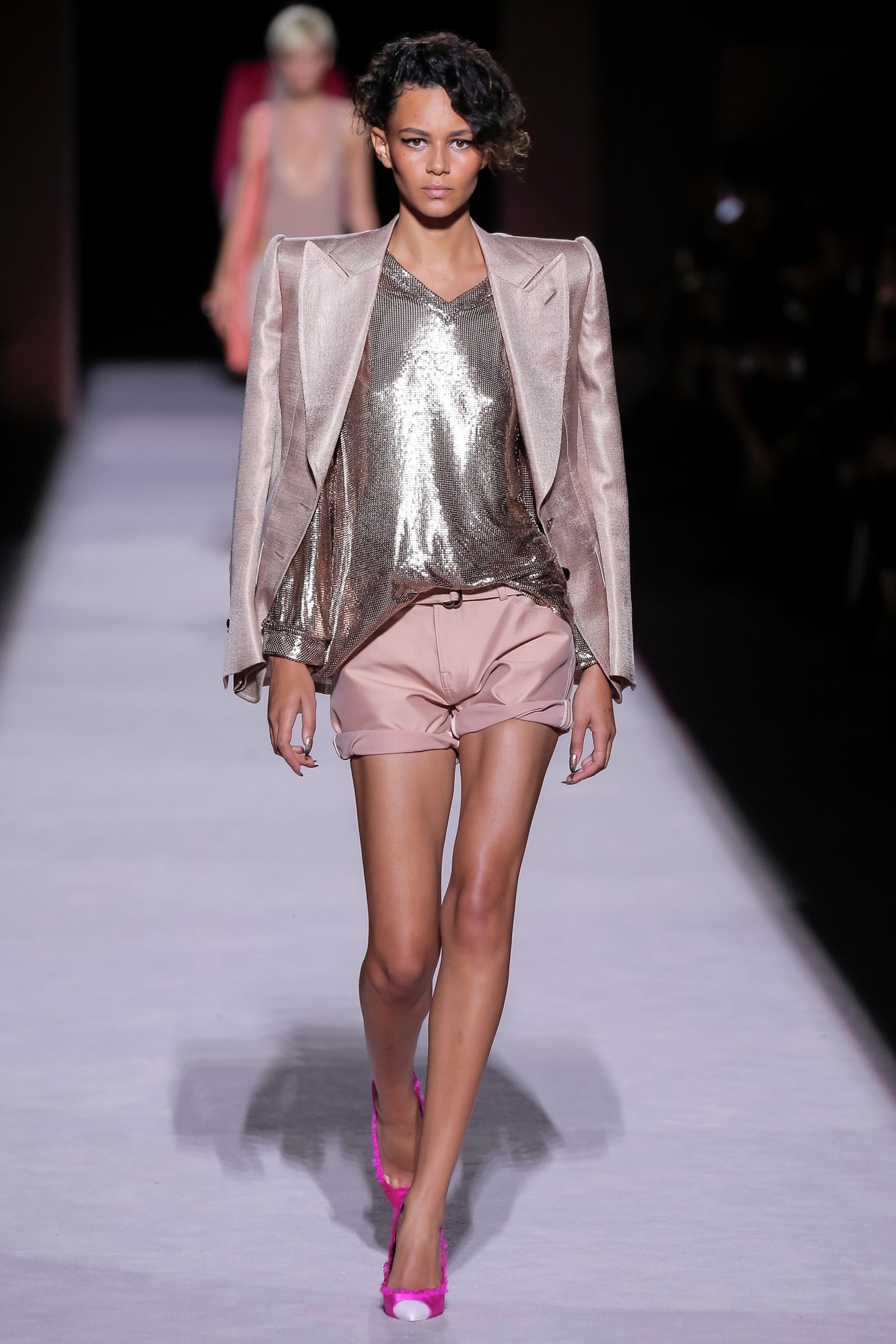
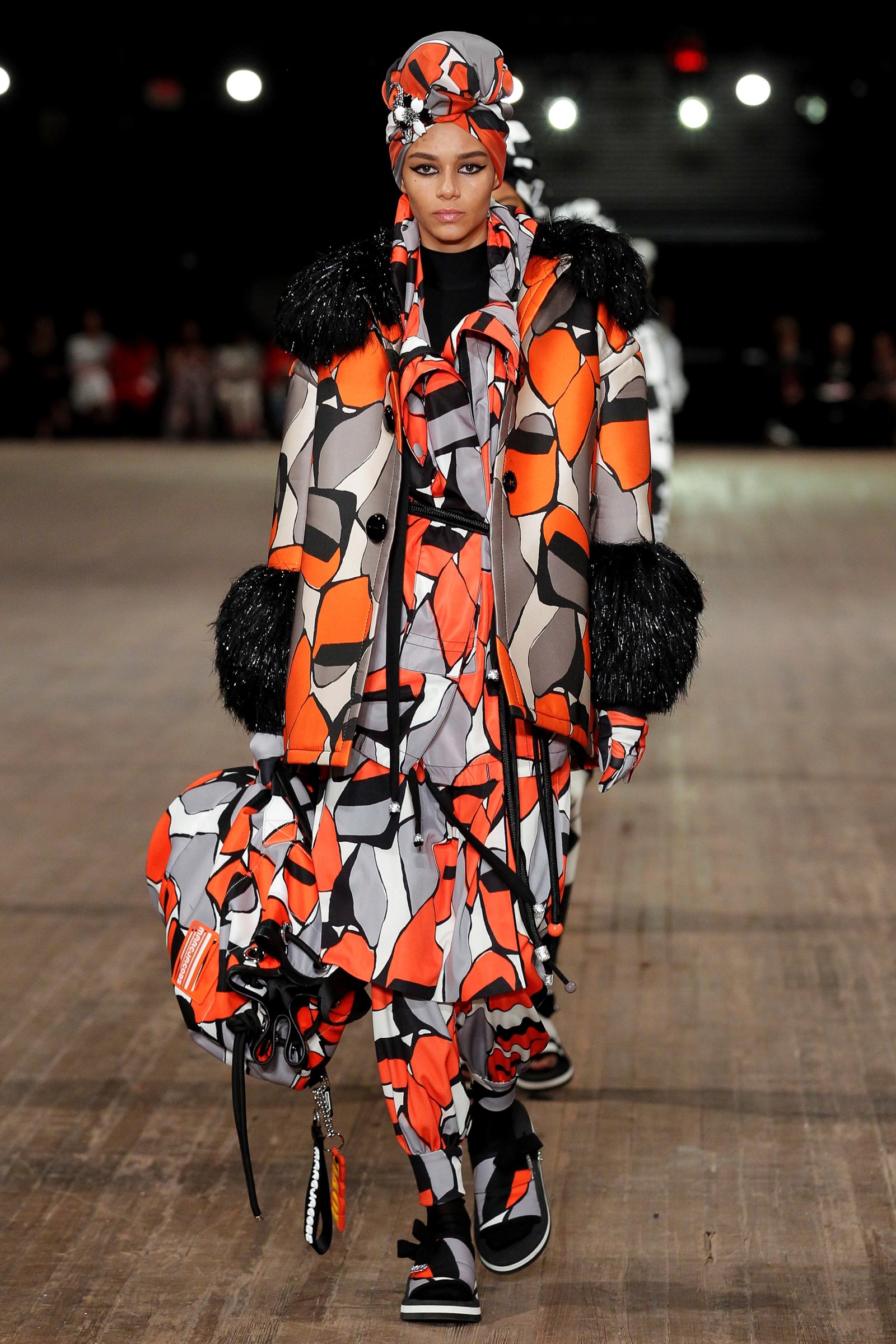
It was interesting to see how their respective visions transformed first the space, and then their women. Marc Jacobs left it bare – no music, no set, just a few hundred chairs ranged far around the perimeter, the beads and rustling fabrics and slip-slap of the models’ flat shoes the only sounds echoing in the cavernous hall. By contrast, a week earlier under Tom Ford’s distinct imprimatur, it became womb-like, pulled right in around a narrow catwalk, lushly carpeted, lavender-hued shag pad, heady with the scent of his new fragrance, the colourfully titled ‘Fucking Fabulous’. I don’t know the keynotes, but that name reeks of confidence – which Ford also has, in plentiful supply.
“Day clothes for women have almost evaporated,” commented Ford after his show, groomed and gleaming and cosseted in another darkened room as music throbbed outside (it wasn’t the Donna Summer crooner Love to Love You Baby. But it should have been). “My son goes to school in Los Angeles and London, and I was looking at what all the moms dropping off the kids wore there,” continues Ford. “They’re all wearing yoga pants and maybe a sheer jacket. Sportswear.”
“Day clothes for women have almost evaporated” – Tom Ford
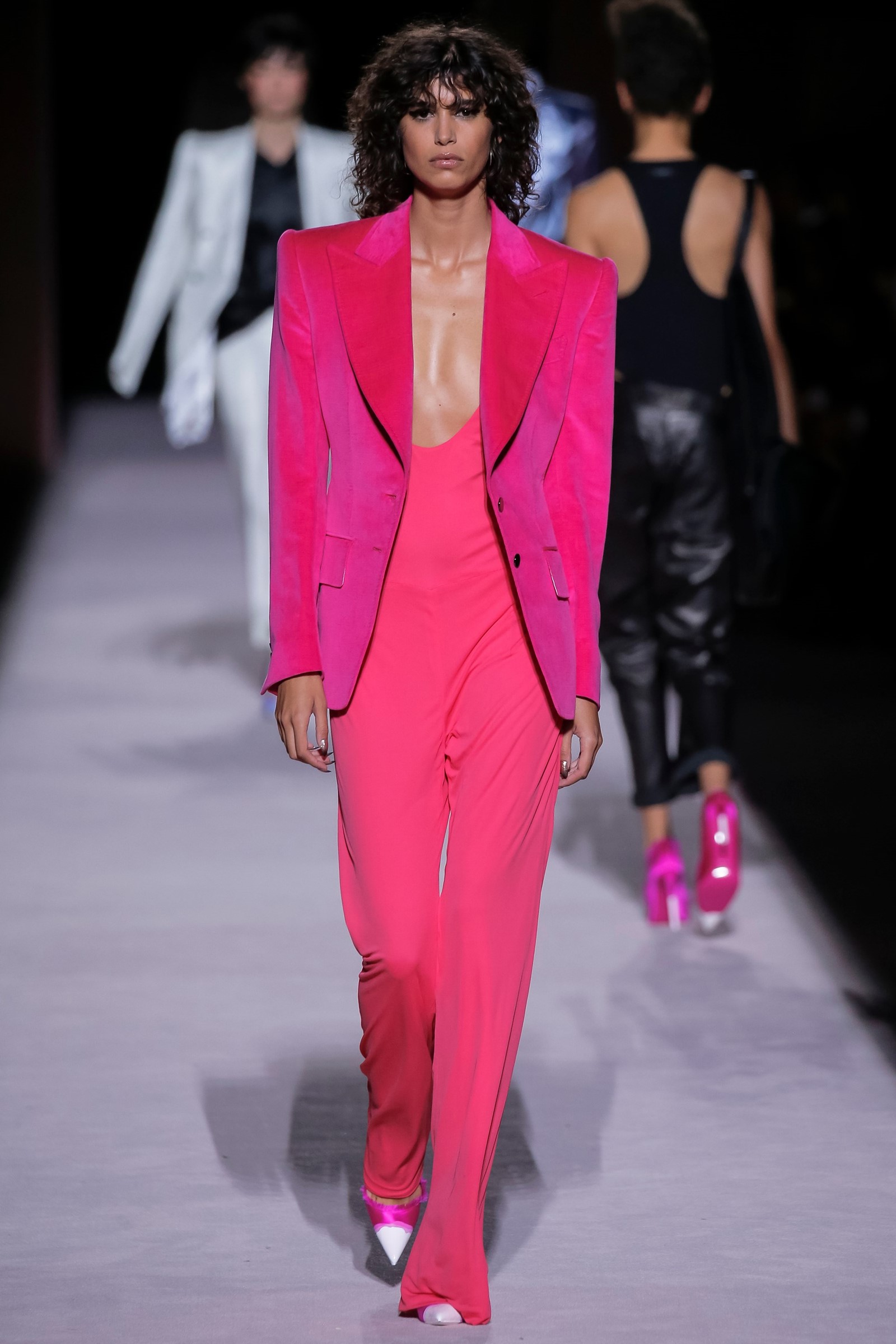

That was what Ford showed – kinda, to borrow an applicable Americanism. Ford’s casual-luxe put the emphasis on the latter over the former, with souped-up sportswear in silks and chainmail crystal. Wide-shoulder tailored jackets were combined with yoga trousers over needle-slim heels, and glitz-blitzed long sweaters became exceedingly short dresses, as if the wearer had wriggled out of her yoga sweats to party. Those reminded me of an old New York anecdote concerning one of the city’s leading socialites, the late Nan Kempner: she was refused entry to the chichi restaurant La Côte Basque because she was wearing a Saint Laurent Le Smoking. It was the 60s – women still weren’t allowed to dine wearing trousers. Nan dropped her pants and walked in in her jacket and bare, freckled legs. Fucking fabulous, indeed.
That spirit infused the whole of this Ford offering, which was one helluva ride, even if you weren’t the women the clothes were aimed at. There are plenty of them, though. Legions in fact. They flocked to Ford at Gucci in the 90s, and their demands (and tastes) haven’t changed all that much. Ford himself stated that this show was inspired by his own back-catalogue – everyone else is riffing on it, so why not him? And his women will relish these garments, broad of shoulder, glossy of surface, preened and polished. These women look like they own 51 per cent of this company. It certainly ain’t their first time at the rodeo. More than anything else, they all looked rich. And they are.
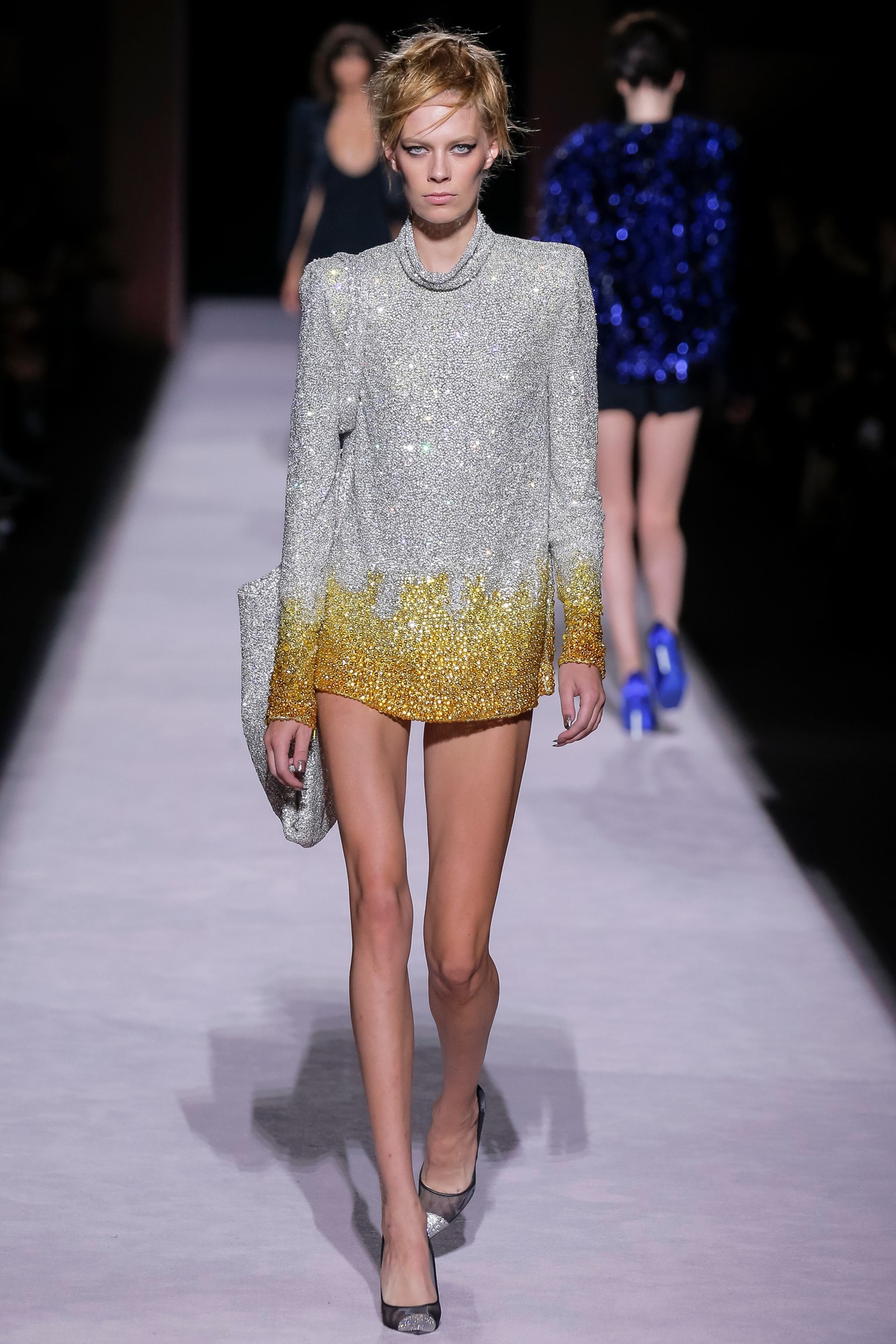

Marc Jacobs’ show was rich too, in an entirely different way. If Ford pared back, Marc piled it own – print, colour, texture, turbans. Lots of those, on every look. If Donna Summer wasn’t singing at Ford, she was here in spirit at Jacobs. “Exaggerated, decadent, exotic,” said Jacobs – the title Somewhere hovering over your perception of the collection. The inspiration could have come from anywhere, but the overall feel was, again, definitely American, and specifically New York.
On first glance, I saw lots of Kempner (again) in its Saint Laurent-isms. Nan was a noted and devoted disciple of Saint Yves – and so is Jacobs. “Probably the designer that I go back to the most is Saint Laurent,” he told W magazine this month. “I have a friend who I used to work with a lot and we’d always say, ‘When in doubt, look at Saint Laurent’.” But there were also plenty of lesser-known New Yorkers, like Scaasi and Adolfo, bits of Bonnie Cashin in its sportswear focus, the hot fluoro colour of Stephen Sprouse, whom Jacobs has always adored and whose graffiti-tagged signature he revived famously in 2000 via his former gig at Louis Vuitton. Jacobs was born in New York in 1963; he was raised by his grandmother on the Upper East Side, where he doubtless saw plenty of women dressed just like this.
“Exaggerated, decadent, exotic” – Marc Jacobs
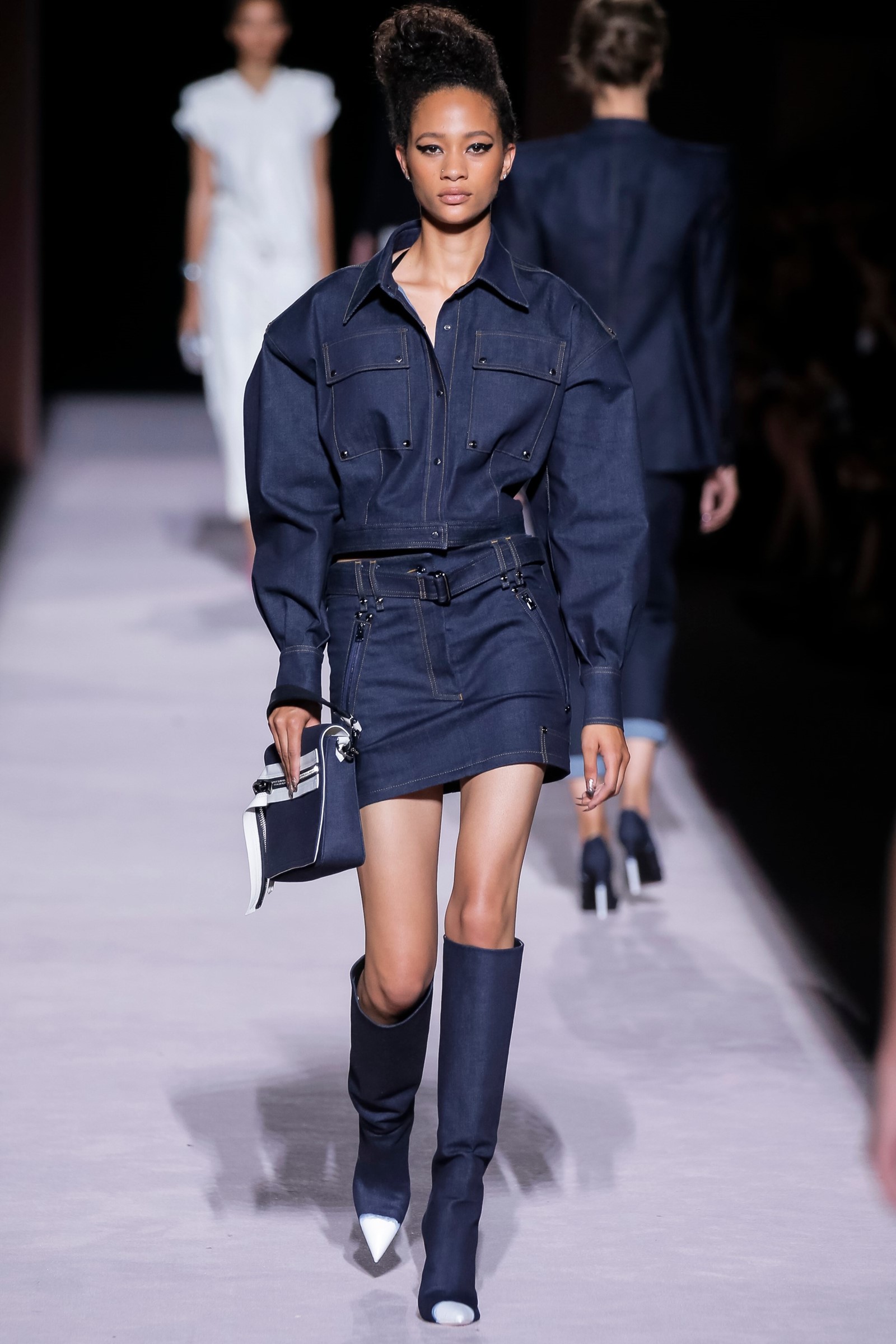
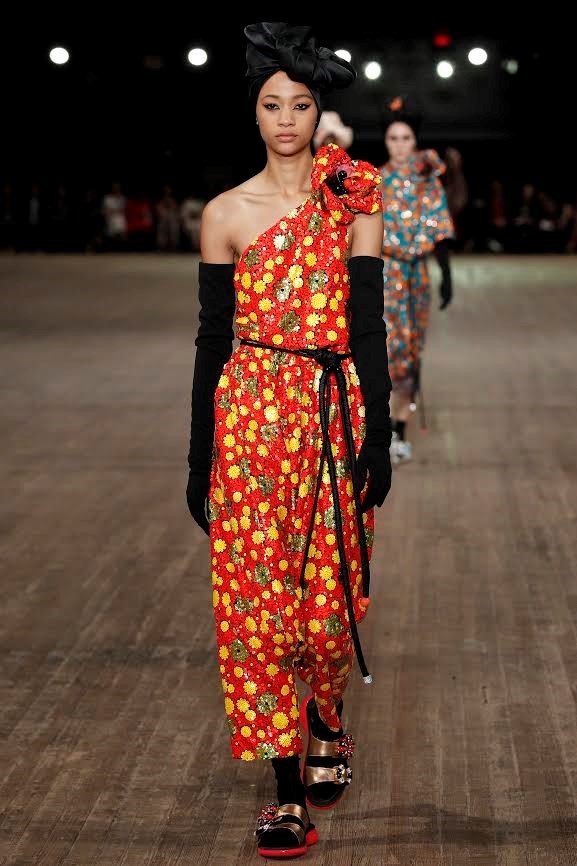
Like Ford, there was also a whole ton of backwards glances to Jacobs’ collections past. It wasn’t a greatest hits – there were throwbacks to collections that were lambasted, like his decade-old “backwards” show. The drubbing it received, oft focussed on its start time (nearly two hours tardy) is the reason Jacobs now begins his shows on the dot, whether you’re in your assigned seat or not. But others were rather more celebrated: the bright colour of his 2009 Club Kid show; the bedraggled layers of his seminal 1993 Grunge outing; even the turbans riffed on the outfit he fashioned for Kate Moss at the Met in 2009. “The reimagining of seasons past,” said Jacobs.
Was Jacobs’ collection an intentional love letter to New York? Probably not, judging by the title Somewhere – and his wistful talk of friends on vacation, presumably while Jacobs was hard at it. Maybe that lust for wanderlust influenced the looks – at first appearance, there was nothing especially American about it: those psychedelic prints nodded to Pucci; the hot colour was almost Caribbean; the couture flourishes (the gloves, the turbans) were French. But when you digested the veritable bouillabaisse of cross-cultural references, there was something about the mongrel mix that echoed an American sensibility – founded as it is on immigration, a melange of different cultures and influences. This served as a hearty riposte to the xenophobic leanings of American isolationism: Jacobs’ borders were wide open, this collection infused by ideas culled from anywhere and everywhere, but mixed into something with a specific Manhattanite GPS. You can make it there; you couldn’t make it anywhere. America, after all, is the home of the free, the land of the brave. Jacobs is both. So was this collection.
